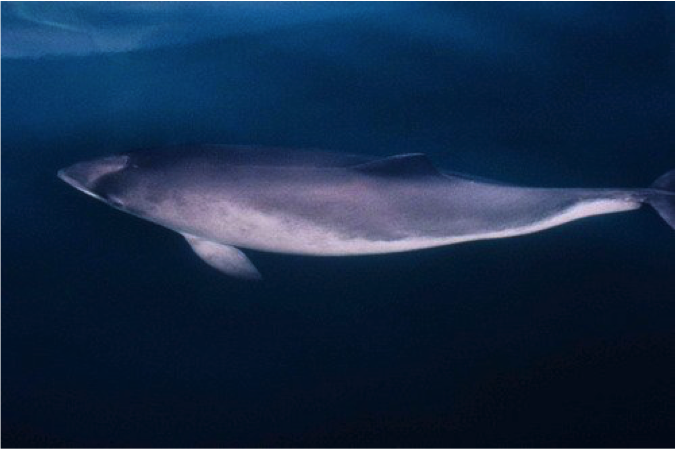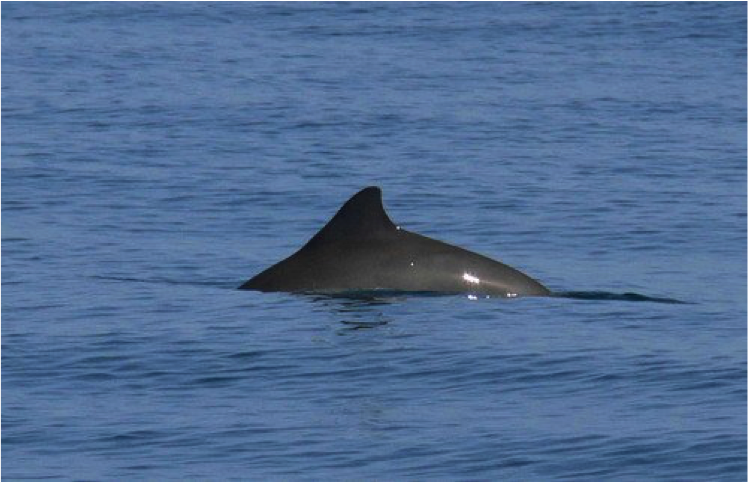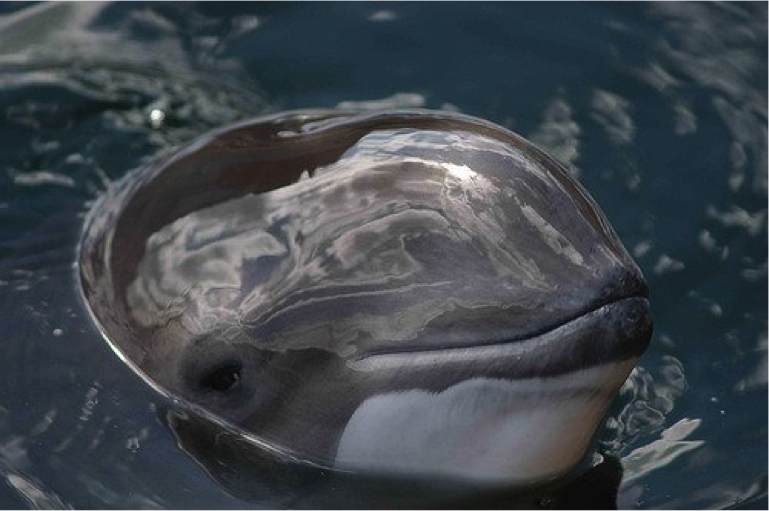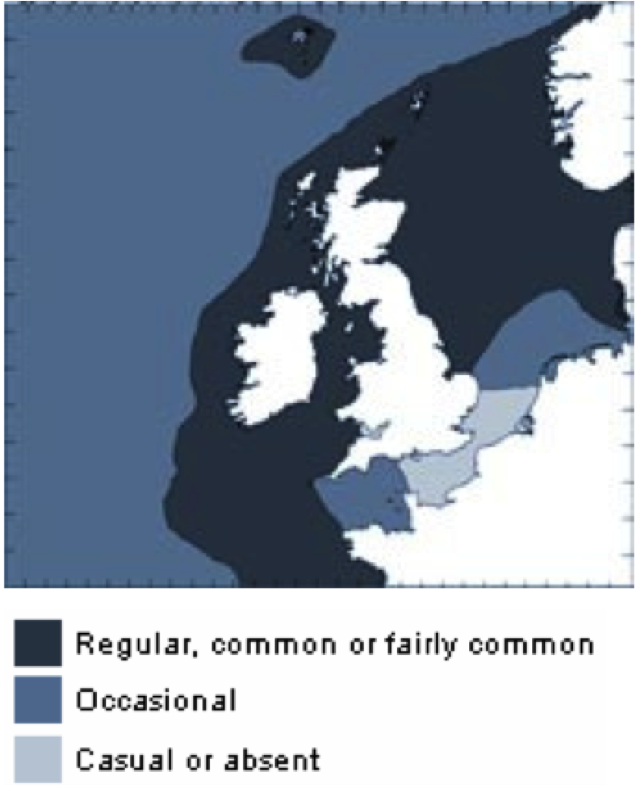Down here in Cardigan Bay, we seem to spend most of our time looking at the sea and counting bottlenose dolphins. In fact, if you ask people to name a type of cetacean they might find in British and Irish waters, most of them will name some variety of dolphin species. However, there is another, much smaller, cetacean species, which makes our waters its home.
Let me introduce to you…..the harbour porpoise!
The harbour porpoise is actually the most common cetacean species across the whole of Europe, where the species demonstrates a strong preference for cooler, shallow (<200m), coastal waters. Harbour porpoise population distributions are known to vary seasonally according to the abundance of key prey species, such as herring, cod, and mackerel, but it is possible to observe them throughout the year in some locations.
In the UK and Ireland you can expect to see harbour porpoises in most coastal areas, especially on the west coasts, although the species is relatively absent from the south coast and the English Channel.
The morphology of a harbour porpoise is highly similar to that of a bottlenose dolphin, with its dark grey colouring and smooth streamlined body; in fact many porpoises are actually mistaken for bottlenose dolphins. However, it is possible to distinguish between the two species by examining several key morphological indicators
1. The harbour porpoise, with an average length of 1.3-1.5 metres, is much smaller than the bottlenose dolphin, which can reach up to 4 metres in length down here in Cardigan Bay. This makes it much harder to spot porpoises at a distance, as they are far less visible.

- A harbour porpoise from above, their dark grey colouring and streamlined body closely resembles the morphology of a bottlenose dolphin. Photo credit: I.BIRKS/Sea Watch Foundation.
2. Instead of a tall, sickle shaped dorsal fin, which is a characteristic of many dolphin species, the harbour porpoise possesses a much smaller, triangular shaped fin, which can only just be observed above the surface of the water. This low profile dorsal fin makes it very difficult to spot harbour porpoises in rough weather, but operates as one of the most distinguishing characteristics of the porpoise species.

- The small, triangular dorsal fin of a harbour porpoise. This is often the only part of a porpoise that can be spotted during a survey. Photo credit: K. Hepworth/ Sea Watch Foundation
3. Finally, whilst many dolphin species, for example the common dolphin or the bottlenose dolphin, have conical shaped heads and well developed beaks, a harbour porpoises head is far more rounded with very little beak visible.

- With rounded heads and no visible beaks, the head of a habour porpoise is very different to that of a bottlenose dolphin. Photo credit: M.Baines/ Sea Watch Foundation
In addition to these morphological differences, it is also possible to discern between a harbour porpoise and a bottlenose dolphin by assessing the behaviour. Bottlenose dolphins are known to be highly acrobatic, with full body breaches and leaps commonly observed. Bottlenose dolphins are also known to frequently approach boats and even engage in a bit of bow-riding. However, the harbour porpoise is far more shy. Porpoises have perfected the art of maintaining a low profile when surfacing and are known to actively avoid boats. Therefore, sometimes all you need to do is see how an animal behaves to determine which species it belongs too.
So there you go, that’s the harbour porpoise; the smaller, shyer, but equally fascinating cousin of dolphins. If you’re out and about by the sea one day you might be lucky enough to spot one of these creatures. If you do, then please enter your sighting on our national database; that way we can continue to protect and conserve our wonderful British cetacean species.
Written by: Laura Bartlett, Sea Watch Foundation Intern 2016

























